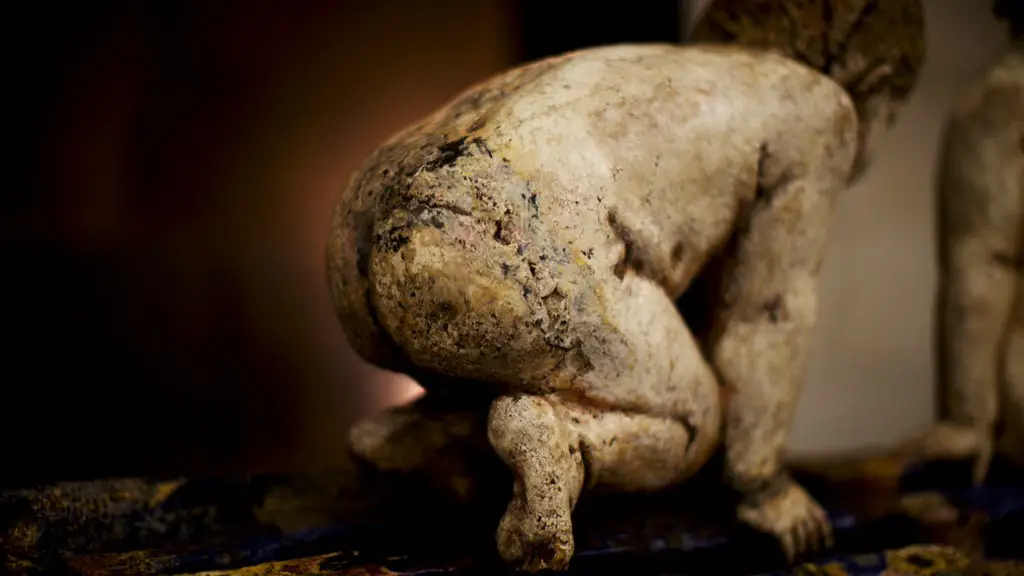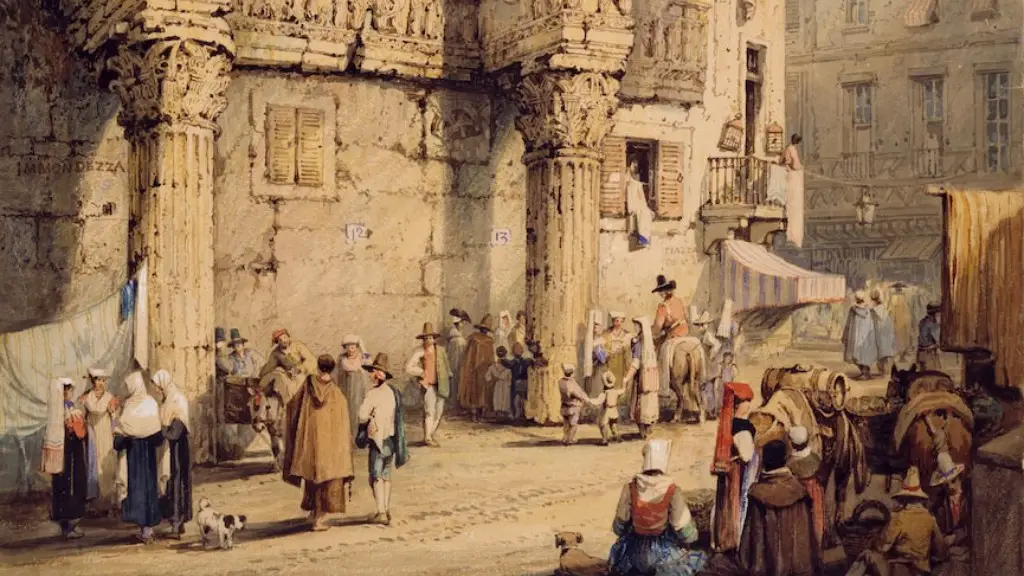Where were Slaves Sold in Ancient Rome?
Slaves were a crucial commodity in Ancient Rome and could be found in nearly every household. An integral component of the Roman economy, slaves represented a significant investment, particularly in harder-to-acquire technological and artisanal skills. Roman elites valued them as status symbols and relied on them to drive their businesses and take on difficult tasks.
Slaves in Ancient Rome were acquired from a variety of different sources, including warfare, debt payment, and even kidnapping. However, the practice of buying and selling slaves, as well as their rental was a common and widespread practice.
One of the most prominent places to purchase slaves in Ancient Rome was the Roman slave market, or the macellum. Located near the Forum Boarium, this market was in operation from the mid-1st century BC to the early 6th century AD and it was the largest slave market in the city. Slaves from all over the world were gathered and displayed there, eager buyers arriving from all over the empire.
Additionally, wealthy families and merchants often used their own agents to travel abroad and acquire slaves from foreign lands. This could be done both discreetly and openly and there are records of many of these slaves being brought back to Rome and then sold at the macellum.
Slaves were also put up for sale in the provinces, not just the capital, and there were many other venues to buy and sell slaves, such as the slave auctions held outside prisons, the opa and the tabularii. The latter two were legal records of sales of slaves, as well as other transactions and contracts.
Slaves were valuable investments, but also a source of ongoing costs as they needed to be fed, clothed and housed. Therefore, Roman law sought to ensure that slaves were “well treated” to prevent them from being exploited, but it was not uncommon for them to be mistreated and even brutalised.
Historians have long wondered how the Roman authorities were able to regulate the slave trade, but recent evidence shows that the practice of buying and selling slaves in Ancient Rome was subject to complex laws and regulations. For instance, it was illegal to sell a child under 10 years old, or a pregnant woman without permission from the father.
Punishments for Illegal Slave Trading
The Roman authorities also employed a series of punishments to discourage and punish anyone involved in the illegal slave trade, including fines, imprisonment and even death. Julius Caesar went so far as to introduce a law that made it illegal to buy or sell slaves within the city of Rome, though the law was later revoked.
It was not just slave traders who could be punished – even owners could be held responsible for the mistreatment of slaves. Slaves were seen as private property and it was not uncommon for Roman elites to punish their slaves by cruel means.
In fact, some of the most severe punishments were reserved for runaway slaves. Runaways were often branded with hot irons and had their ears cut off. In some cases, they would also be crucified, a punishment reserved for the most serious offenders.
The Roman authorities also introduced a number of public laws that sought to limit the exploitation of slaves. This included laws banning certain slave trades, as well as attempts to regulate the prices of slaves.
It is clear that slavery was a hugely significant aspect of the Roman economy and culture and the sale of slaves was one of the most important activities in Ancient Rome. Slaves were ubiquitous in Roman society and were viewed as both a source of income and a necessary tool for the successful functioning of the Roman Empire.
The Legacy of Slave Trading
The legacy of slave trading in Ancient Rome continues to be felt today, with many scholars noting the similarities between the Roman slave system and modern-day practices of exploitation and oppression. Despite its complex legal system, slavery in Ancient Rome was inextricably linked to power and subjugation.
Recent research has also shed light on the psychological trauma felt by those enslaved in Ancient Rome, providing insight into the lived experience of the slave population. Slaves were not only seen as property or a mere source of labour, but also as human beings with their own stories and experiences.
Today, the legacy of slavery in Rome serves to remind us of the need for social justice and the importance of recognising the universal human rights of all people. It is a reminder that even in the ancient world, exploitation and oppression ran rampant and that we must be ever watchful of these abuses.
Socioeconomic Impact of Slave Trading
The economy of Ancient Rome was heavily dependent on slave labour. Slaves were vital for their manual labour, and also for their contribution to new technologies and techniques. Many slaves were skilled craftsmen and artisans and their skills were highly sought after.
The rich owners of these slaves enjoyed great wealth, while the average citizens of Rome were deprived of their resources. Slaves were also essential for the production of luxury goods and fine food, which were only available to the wealthy elite.
The trade of slaves had a major impact on the Roman economy and created a deep divide between the haves and the have nots. This was exacerbated by the fact that slaves had no legal rights and were largely excluded from the political system.
Whilst slavery was a key part of daily life in Ancient Rome, its legacy has been long-lasting and has become an important part of the history of the city. It is an issue that is still being addressed today, as evidenced by the work of modern human rights advocates.
Intersection of Race and Slave Trading
In Ancient Rome, the majority of slaves were acquired from war, and were typically from the Mediterranean region. However, in the later stages of the empire, the acquisition of slaves from African and other non-Mediterranean countries became more common.
Racial features were often used to determine the market value of a slave, as lighter skinned slaves were generally seen as more desirable and were thus more expensive. Some slaves were even branded with a symbol to mark them as belonging to a specific owner.
In addition, there was an intersection of race and skill in Ancient Rome. Generally, lighter skinned slaves were perceived as having higher levels of intelligence and thus were employed in more skilled labour, while darker skinned slaves were viewed as suitable only for manual labour.
This reveals a racial hierarchy that was deeply entrenched in Roman society and which was used to both oppress and privilege certain groups within it.
Conclusion
The sale of slaves was an integral part of Ancient Rome, with slaves being acquired from a variety of sources, such as warfare and debt payment, and being sold at markets and auctions throughout the empire. Whilst the Roman law attempted to regulate the slave trade, slavery in Ancient Rome was inextricably linked to power and subjugation. The legacy of slavery in Rome continues to be felt today, with its implications for modern-day exploitation and oppression.
The sale of slaves also had an immense impact on the Roman economy and created a large disparity between the wealthy and the poor. Its legacy has been long-lasting, and provides an important reminder of the need for social justice and the recognition of the universal human rights of all people.





